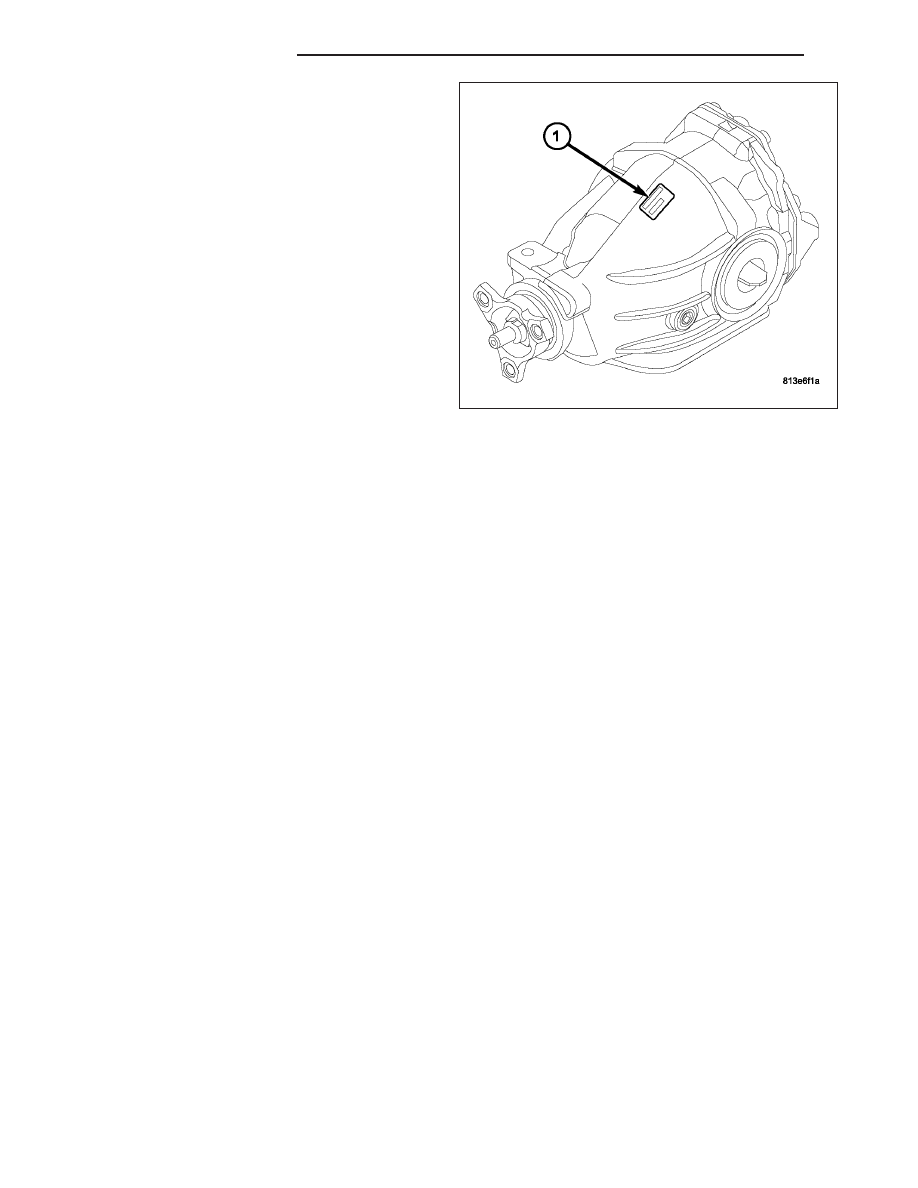Chrysler 300/300 Touring/300C, Dodge Magnum. Manual - part 129

DIAGNOSIS AND TESTING
GEAR NOISE
Axle gear noise can be caused by insufficient lubri-
cant, incorrect backlash, incorrect pinion depth, tooth
contact, worn/damaged gears, or the carrier housing
not having the proper offset and squareness.
Gear noise usually happens at a specific speed range.
The noise can also occur during a specific type of
driving condition. These conditions are acceleration,
deceleration, coast, or constant load.
When road testing, first warm-up the axle fluid by driv-
ing the vehicle at least 5 miles and then accelerate
the vehicle to the speed range where the noise is the
greatest. Shift out-of-gear and coast through the peak-
noise range. If the noise stops or changes greatly:
•
Check for insufficient lubricant.
•
Incorrect ring gear backlash.
•
Gear damage.
Differential side gears and pinions can be checked by turning the vehicle. They usually do not cause noise during
straight-ahead driving when the gears are unloaded. The side gears are loaded during vehicle turns. A worn pinion
shaft can also cause a snapping or a knocking noise.
BEARING NOISE
The differential and pinion bearings can produce noise when worn or damaged. Bearing noise can be either a whin-
ing, or a growling sound.
Pinion bearings have a constant-pitch noise. This noise changes only with vehicle speed. Pinion bearing noise will
be higher pitched because it rotates at a faster rate. Drive the vehicle and load the differential. If bearing noise
occurs, the rear pinion bearing is the source of the noise. If the bearing noise is heard during a coast, the front
pinion bearing is the source.
Worn or damaged differential bearings usually produce a low pitch noise. Differential bearing noise is similar to
pinion bearing noise. The pitch of differential bearing noise is also constant and varies only with vehicle speed.
Wheel hub bearings produce noise and vibration when worn or damaged. The noise generally changes when the
bearings are loaded. Road test the vehicle. Turn the vehicle sharply to the left and to the right. This will load the
bearings and change the noise level. Where axle bearing damage is slight, the noise is usually not noticeable at
speeds above 30 mph.
LOW SPEED KNOCK
Low speed knock is generally caused by a worn U-joint or by worn side-gear thrust washers. A worn pinion shaft
bore will also cause low speed knock.
VIBRATION
Vibration at the rear of the vehicle is usually caused by a:
•
Damaged propeller shaft.
•
Missing propeller shaft balance weight(s).
•
Worn or out-of-balance wheels.
•
Loose wheel lug nuts.
•
Worn U-joints or CV joints.
•
Loose/broken springs.
•
Damaged axle shaft bearing(s).
•
Loose pinion gear nut.
•
Excessive pinion yoke run out.
•
Bent halfshaft(s).
3 - 248
REAR AXLE - 215RII
LX